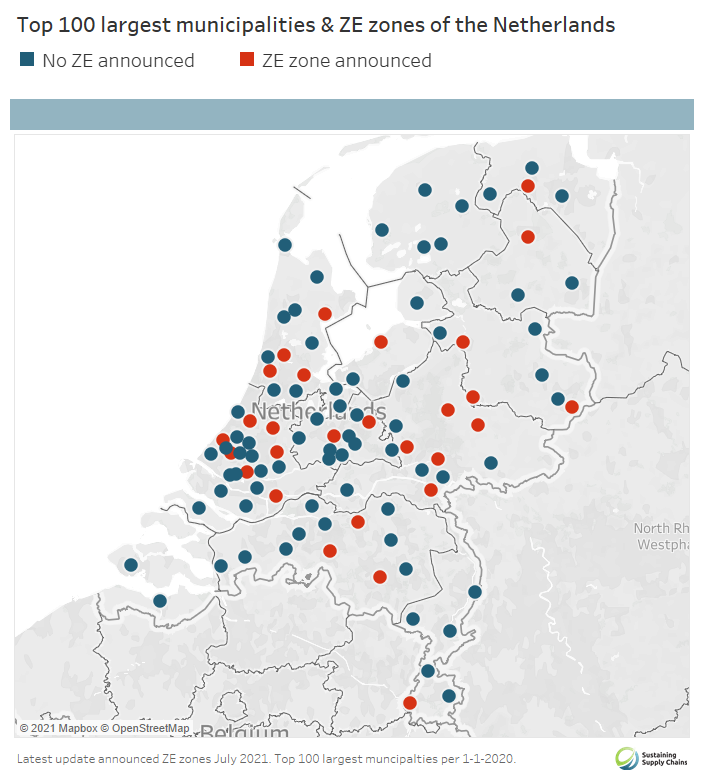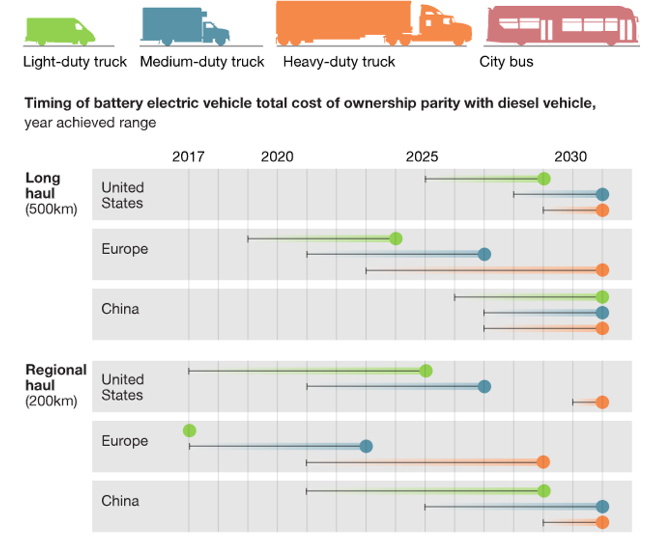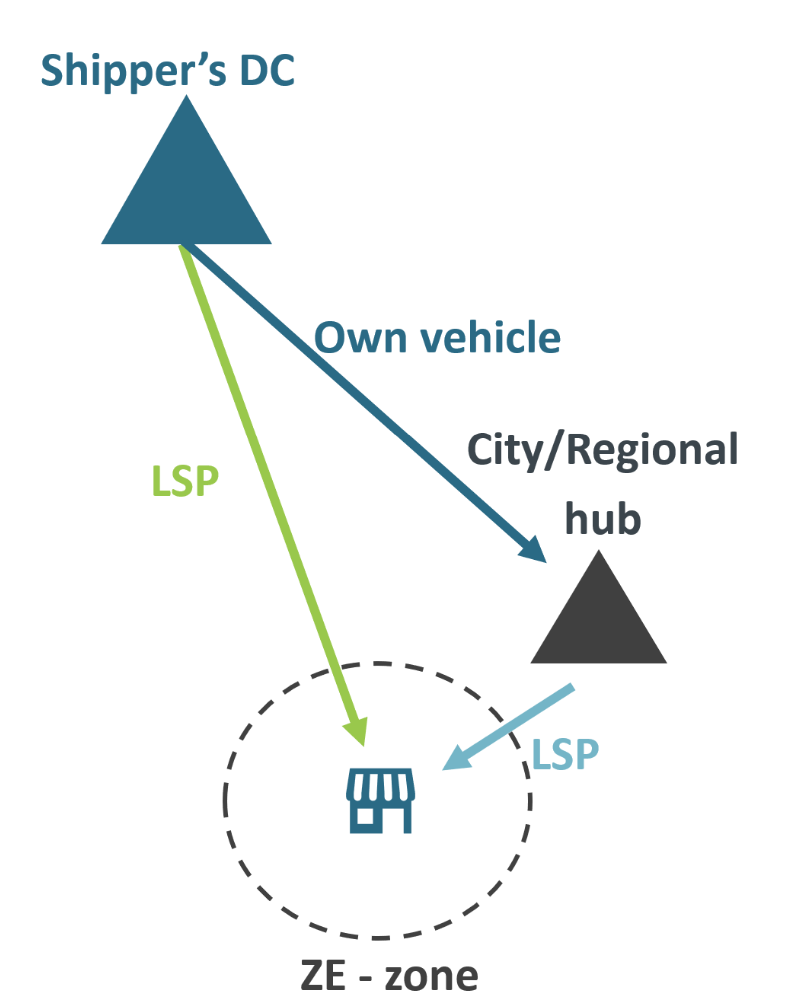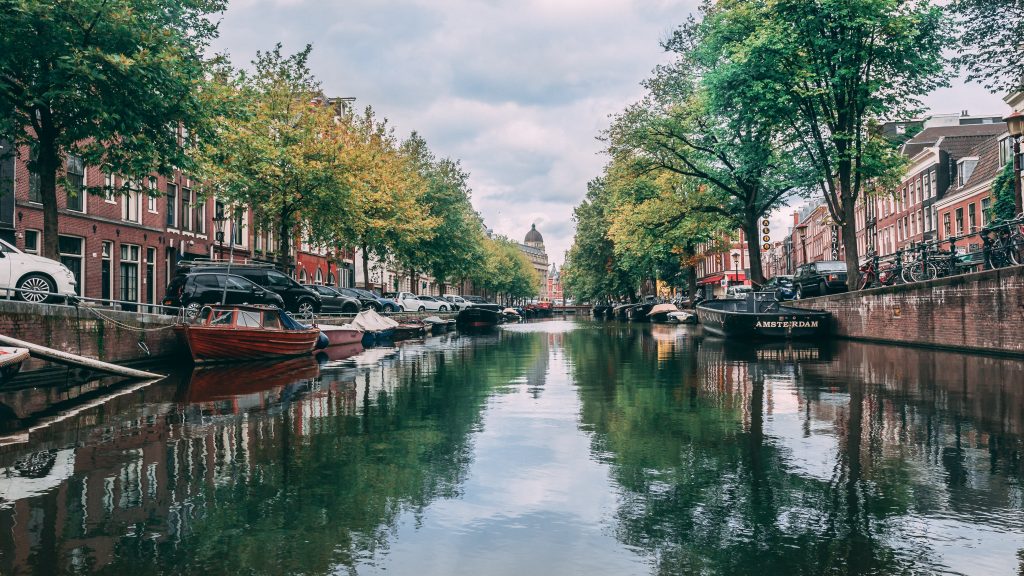Although 2025 still sounds far away for many of you, logistics services providers and shippers in The Netherlands may connect it to the year when zero emission (ZE) zones in city centers will be implemented for city logistics. At this moment 25 cities have announced their ZE zones and the date of implementation. More are expected to follow, as the Dutch climate agreement targets 30-40 of the largest cities having a ZE-zone in place from 2025. The implementation of the ZE zones needs to lead to a reduction of 1 Mton CO2. Cities must announce the zone at least 4 years prior to implementation.
Shippers who have outsourced their transport to logistics services providers will not worry too much at this moment if they know the contents of the climate agreement for mobility. 2025 Is still far away and their logistics services providers should be solving the problem for them. For heavy trucks a transition agreement has been put into place, giving younger trucks with EUR-6 engine (after 1/1/2020) the possibility to enter the ZE zones until the end of 2029.
When you are a shipper or distributor with your own fleet, or logistics services provider, that needs to deliver in city centers, it is time to start taking actions. You will need to first understand the foreseen impact on your fleet. From here you can further work on your plan to implement the changes over time.

Case study
We have conducted recently a study for a retailer with its own transport fleet. In this case the current fleet exists of trucks, which are not allowed to enter the ZE zones in 2025. Over 50% of their trips will be affected and 20% of their stores. Their transport execution consists of both single store deliveries and multi-stores deliveries, with different types of equipment. A gradual replacement to battery electric vehicles (BEV) seems to be the right solution for them, although from a cost perspective this will lead to higher cost to serve.
Over time we however expect that the GAP in total costs of ownership between the EUR-6 diesel trucks and BEV trucks will become smaller. Future road taxes for diesel trucks will contribute to partially closing the gap. McKinsey has conducted a study, that gives a good general overview for different regions, of when the Total cost of Ownership of Battery-Electric vehicles are comparable to Diesel vehicles.

A challenge is found in getting the high-speed loading equipment installed in time at their DC or at a shared loading platform in the vicinity of the DC. The lead time should not be underestimated and may take until 2024 to have the loading infrastructure in place.

In addition, they will need to find a solution for those stores, that are out of the distance range of the BEV trucks. Although it is expected that the battery range will increase over time, it will not be enough for a return trip between the DC and stores. Here a solution can possibly be found to continue to drive with a EUR-6 engine, but drop-off their goods to regional hubs and/or city hubs. See possible scenarios in the figure at the right.
From these hubs the goods and store returns can be managed with ZE-vehicles of the hubs. From a distance perspective also, Hydrogen has been one of the scenarios, but this is expected to be way to costly.
From the study for this retailer, we can draw next conclusions:
- Deliveries in the larger cities in The Netherlands will be affected by the implementation of ZE-zones from 2025 onwards.
- Transport asset-based shippers, distributors and logistics services providers should assess the impact on their fleet and organization already now, assess transition scenarios and draw their plans.
- If the plan is to move to BEV, the loading infrastructure should be part of the plan. The lead time towards implementation should not be underestimated.
- Regional hubs or city hubs are part of the solution if you want to deliver all ZE zones.
What is next?
If you have your own vehicle fleet and delivers to city centers, you should start with measuring the impact of ZE zones on your vehicle fleet and organization. Of course, we can help. We can also show the impact of alternative fuels on your carbon footprint. Do you want to know more about the possibilities and which solutions would fit your organization? Let us know via LinkedIn or at info@sustainingsupplychains.com.




